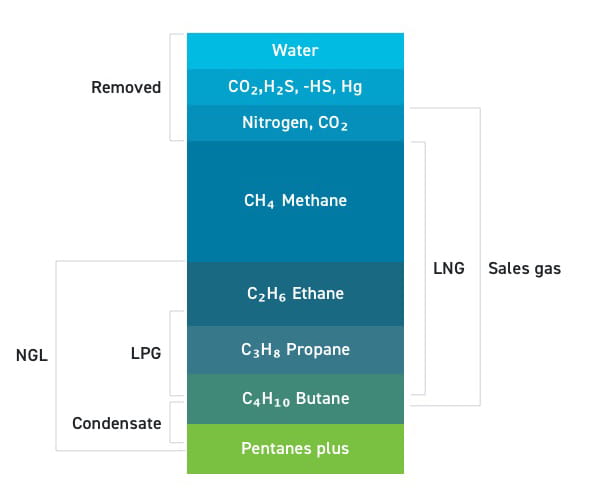Learn the facts about natural gas.
Safe and non-toxic, natural gas emits less harmful carbon emissions than oil or coal. That makes it the cleanest burning fossil fuel, and one that helps reduce the overall effects of greenhouse gases on the environment.
Customers rely on natural gas for comfort and convenience every day. It runs appliances efficiently, warms homes and offices affordably and offers more precise control while cooking, for tastier meals on the stovetop or grill.
Components of natural gas
Natural gas is composed mostly of methane, but also contains small amounts of ethane, propane, butane and pentane. Here's a quick look at all the components that make up natural gas.
How natural gas gets delivered
Natural gas pipelines are equipped to deliver a plentiful supply so every home and business runs smoothly. Made of high-quality materials and part of an efficient technological system, they comply with all state and federal pipeline safety regulations and have the best safety record of all utility pipelines.
More key facts about natural gas
- Used by more than 177 million American consumers.[1]American Gas Association
- Runs through a 2.2 million mile network of underground pipe.[2]American Gas Association
- Natural gas pipelines, which transport more than one-fourth of the energy consumed in the U.S., are an essential part of the nation’s infrastructure. [3]American Gas Association
- Delivered in all 50 states by 1,200 natural gas companies.[4]American Gas Association
Want to share safety information with others? We can provide materials.
Public education requests
For brochures or presentation kits, please email your request at least four weeks in advance.
Materials we can provide
Safety brochures and materials
Safety presentation kit
